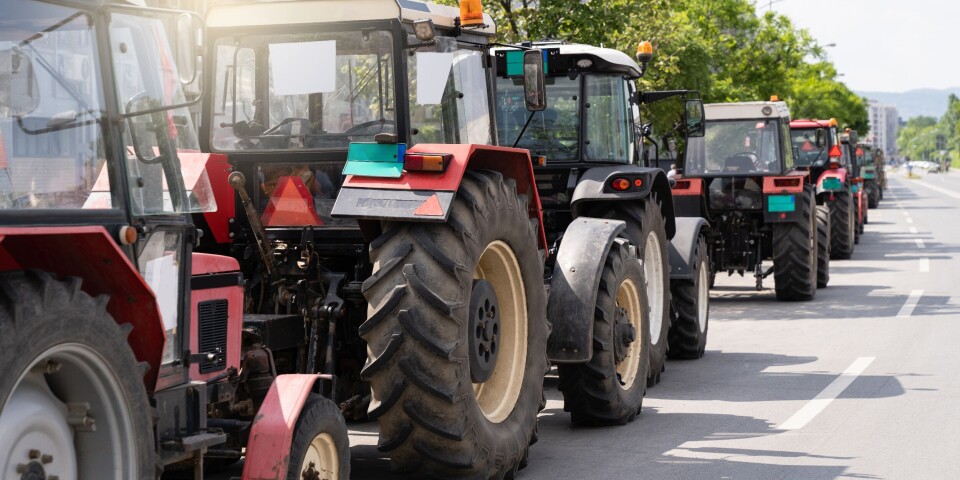The architects behind France’s first traditional Hindu temple, which is being built on the outskirts of Paris, have hailed the project a “bridge” between French and Indian cultures.
Based in Bussy-Saint-Georges (Seine-et-Marne), it was commissioned by Bochasanwasi Akshar Purushottam Swaminarayan Sanstha (BAPS), a Hindu denomination with over 1,200 temples across the world, and is being built by Arte Charpentier, an international architecture firm in Paris.
Though there are other Hindu temples in France, this is the first to be built in the traditional way, with stones sculpted by volunteers in India.
It is intended to be both a place of worship and of culture. The ground and first floor will be dedicated to the latter, with exhibitions, offices, classrooms, gyms and more.
The second floor will be the mandir (temple) itself, including an outdoor terrace.
Read more: French architecture: Marseille's 24-year wait for mosque
This part was designed with the help of Indian architects, because its dimensions are sacred.
“It was an exceptional experience in the exploration and learning of Hindu architecture,” Nahla Jajo-Legrand, regional director for Africa and Middle-East at Arte Charpentier, told The Connexion.
“Designing the first traditional Hindu temple in France and (mainland) Europe was an immense honour,” she added.
“It is testament to our commitment to respecting and enhancing the richness of cultural diversity.”
Mix of traditions
With its stones from India, the project is a combination of French and Indian savoir-faire.
“It is a part of India on French soil, and marries traditional Indian art with French technical standards,” said Andrew Hobson, deputy general manager of Arte Charpentier.
"This project, in particular, represents the union of two areas of expertise: Indian craftsmanship and stone-cutting, and French technical proficiency," said Georges Souaid, the lead architect.
The temple was an unusual project for Arte Charpentier and architects had to respect the religious vision of BAPS as part of their brief.
A further challenge was grappling with the size of the building.
Originally, it was meant to be divided into two separate buildings: the place of worship and the cultural centre. However, as the plot of land was smaller than originally anticipated, the two parts ultimately had to be combined and superposed, which proved tricky.
The temple project is entirely financed by donations from the Hindu community, although the exact budget was not revealed. It will span 5,000m2 and is expected to be completed in 2026.
Buddhist pagoda
It is not just the French capital which is embracing multi-faith architecture – rural France has also been keen to celebrate religious diversity.
Noyant-d’Allier, a small village of 596 inhabitants in Allier, is home to a Buddhist pagoda – a source of surprise for many visitors.
The Pagode Phap Vuong Tu was built in 1983 to meet the demands of a population of mainly Vietnamese immigrants that had fled the country following French troops’ defeat at Ðiện Biên Phủ in 1954, during the First Indochina War. They followed in the footsteps of the Polish and Ukrainians who had first moved Noyant-d’Allier in the early 20th century to work in the mines, and settled in the ‘corons’ (miners’ cottages) that had been left empty when the mines closed in 1943.
The pagoda is made up of a central temple, surrounded by a dozen statues. The most prominent is a seven-metre-tall golden meditating Sakyamuni, the Buddha.
Many other figures of Buddhism are also present, including Ksitigarbha, representing piety; Maitreya, who is believed to be the heir to Sakyamuni; and Avalokitesvara, the incarnation of compassion.
Tourist attraction
The pagoda has been one element of a larger success story of migration and diversity in Noyant-d’Allier, and has encouraged several generations of Vietnamese people to come back to the village.
“We live in Europe, where there are all sorts of religions: Catholicism, Buddhism, Protestantism. Only the respect you grant to people matters,” said Albert Pham, a volunteer from Laos, who has been at the pagoda since 2011.
“When different religious practices evolve in the same area, I cannot say there is an impact on our faith and belief, but there is an impact on how we experience charity,” said Father Rejean, prior at Noyant-d'Allier church since 2010.
The village now attracts more than 25,000 visitors every year and has been marketed by the local mairie and department as part of sightseeing activities around the bocage bourbonnais (the countryside around Noyant-d’Allier).
This has sometimes generated tensions with volunteers of the association running the pagoda. Last September, they published a post on their Facebook page reminding people that it was first and foremost a place of worship, not a tourist site. The pagoda is free to visit and the gardens are open from March 1 to October 30 from 14:00 to 18:50.
The inside of the pagoda is open to the public from Wednesday to Sunday between April 3 and September 29.
“It is the countryside, the fishing games, the friendship, the mix between Vietnam and France, the school teachers. When I leave Noyant d’Allier, there is always a bit of this place that stays with me,” Claudine Quihamptom, a Vietnamese woman, told France 3 in a TV interview.
Ms Quihamptom, who married Peter Quihamptom, a British citizen who settled in Noyant d’Allier 30 years ago, was later joined by many other Vietnamese people, including Caroline Guyenne in the 90s, who took over the Asian restaurant Le Petit d’Asie.




























